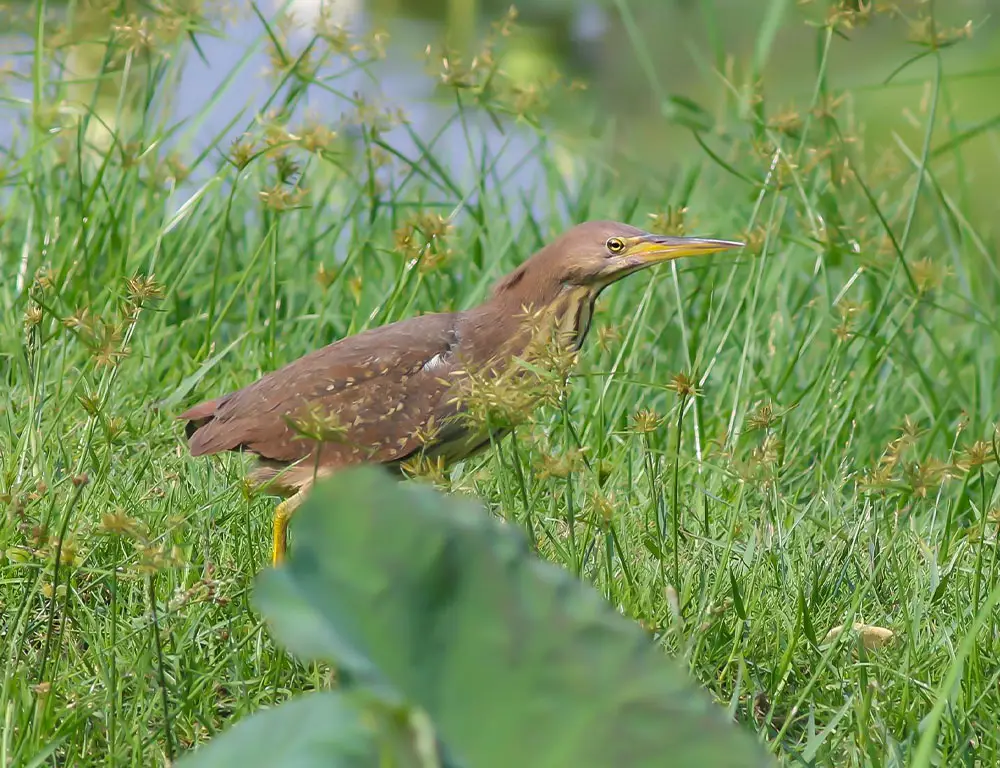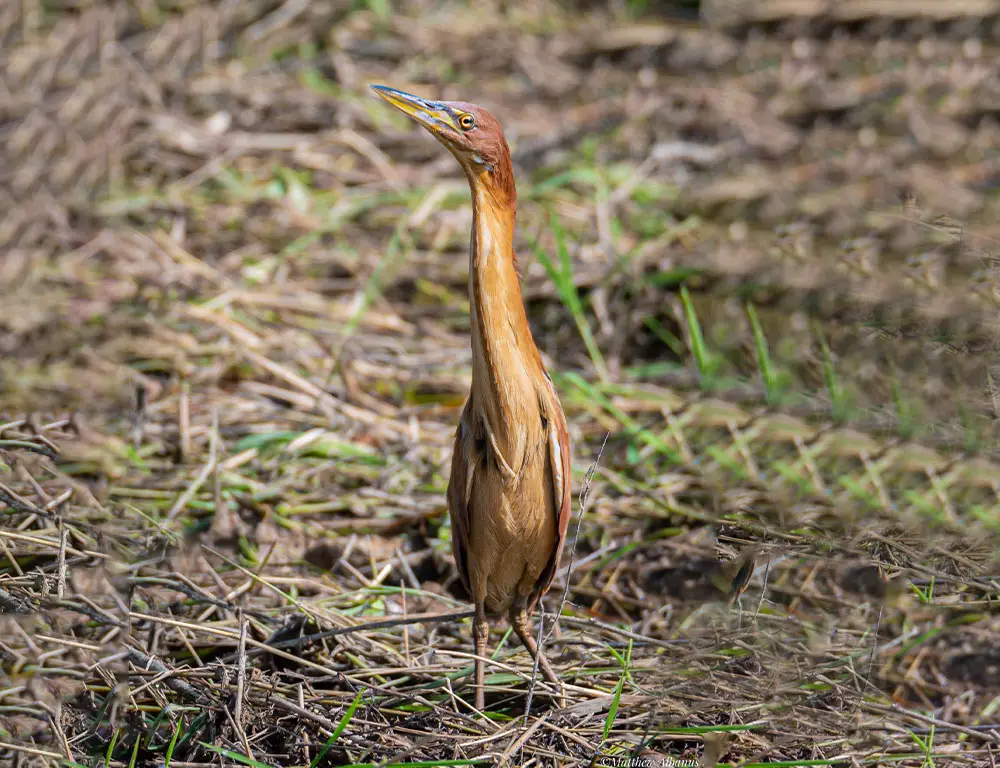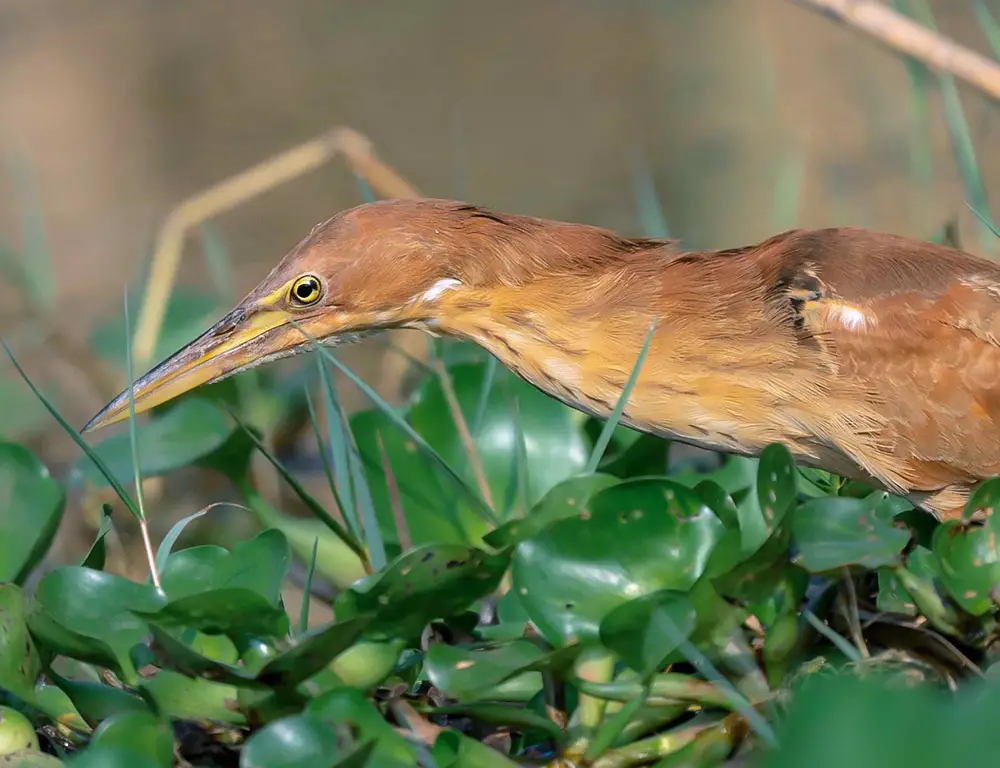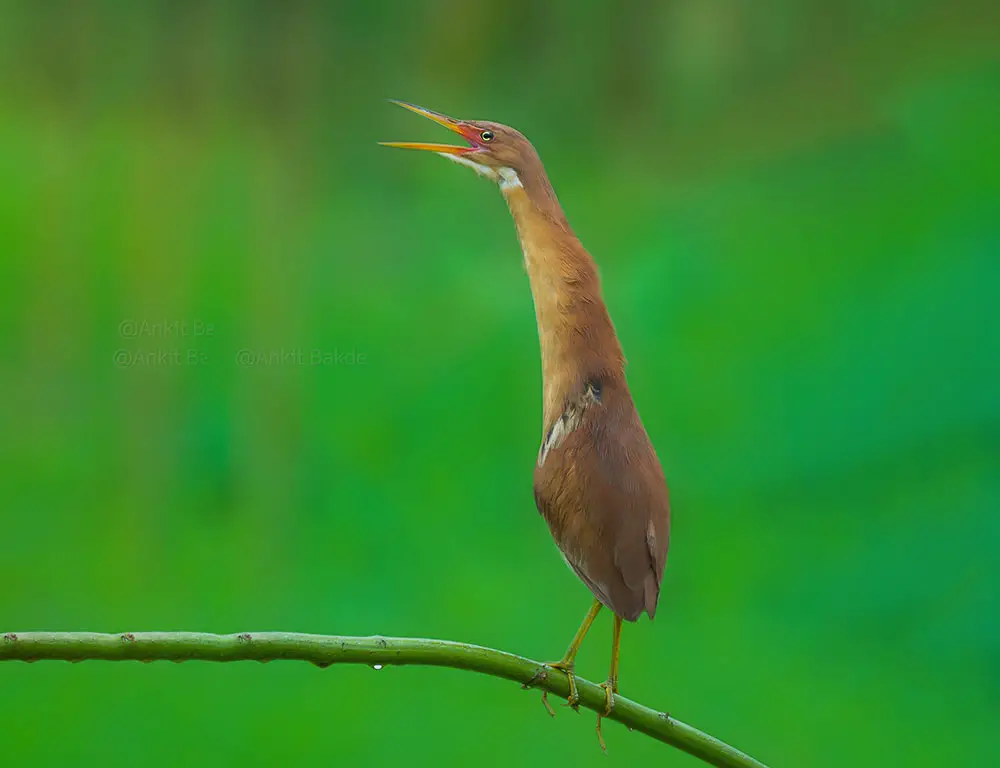If you’ve ever wandered through the lush wetlands of Asia, you may have been fortunate enough to glimpse the elusive Cinnamon Bittern. Renowned for its stunning cinnamon-colored plumage, this avian marvel captivates birdwatchers with its beauty.
Belonging to the heron family, these birds predominantly inhabit tropical regions like Southeast Asia and the Philippines, occasionally venturing into Japan and Australia.
Despite their striking appearance, Cinnamon Bitterns are masters of disguise, blending seamlessly into their surroundings and often evading detection. Their solitary nature adds to their mystique, intriguing ornithologists and enthusiasts alike.
While spotting them may pose a challenge, delving into the world of the Cinnamon Bittern promises a rewarding journey of discovery and admiration.
Physical Characteristics of the Cinnamon Bittern

The Cinnamon Bittern, also known as the chestnut bittern, exhibits several noteworthy physical characteristics:
Size
It falls within the small to medium-sized range, typically measuring between 38-41 cm (15-16 inches) in length.
Coloration
The plumage of the Cinnamon Bittern is its most striking feature, with males displaying predominantly cinnamon-russet tones and females appearing more yellowish-buff. Both genders may have streaks of white or light buff on their underparts.
Beak and Legs
The bill of the Cinnamon Bittern is yellowish-green, with dark brown at the top, providing an eye-catching contrast against its plumage. Its long legs are greenish-yellow, aiding in movement through dense vegetation during hunting.
Body Structure
These birds have sturdy bodies built for stealth rather than speed. They feature short necks and long toes, facilitating silent movement through their preferred habitats, such as water or marshy land, while hunting for prey.
Eyes
The bright yellow eyes of the Cinnamon Bittern stand out prominently against the overall dark coloration of their heads, adding to their distinctive appearance.
Weight
On average, males weigh around 150 grams, while females are slightly heavier, tipping the scales at approximately 170 grams.
Habitat and Distribution of the Cinnamon Bittern

With its affinity for wetland habitats, the Cinnamon Bittern is a species that often goes unnoticed but plays a significant role in its ecosystem.
Here are some key points about its habitat and distribution:
Preferred Habitat
Cinnamon Bitterns thrive in wetland areas with dense vegetation, such as grasslands and marshes. These habitats provide them with ample cover to blend in while hunting for prey.
Geographical Distribution
This species is found across Southeast Asia, from India and Sri Lanka to the Philippines and Indonesia. During the breeding season, they also inhabit parts of East Asia, including Taiwan. Their distribution reflects their preference for warmer climates.
Migration Patterns
Cinnamon Bitterns are not fans of cold weather, so they migrate to warmer regions during winter. Some populations fly south to places like Singapore and Malaysia, seeking better survival conditions.
Seasonal Variation
In Southeast Asia, they are permanent residents, while in East Asia, they are present mainly during the breeding season, which typically spans from April to July. Factors like food availability and climate drive their seasonal movements.
Habitat Preferences
Cinnamon Bitterns particularly favor wetlands with abundant insect life, as they rely on insects as a primary food source. However, they have shown adaptability to human-altered landscapes such as rice fields.
Conservation Concerns
Despite their adaptability, Cinnamon Bitterns face threats from habitat loss due to urban development and agricultural expansion. Conservation efforts are crucial to safeguarding their populations and preserving their habitats for future generations.
Here’s a snapshot of Cinnamon Bittern’s distribution:
| Region | Presence |
| Southeast Asia | Permanent |
| East Asia | Breeding Season |
| South | Winter |
Behavior and Diet of the Cinnamon Bittern

The behavior and diet of the Cinnamon Bittern are fascinating aspects of its ecology, reflecting its adaptation to its wetland habitat. Here’s a closer look at these characteristics:
Secretive Behavior
Cinnamon Bitterns are known for their secretive nature and often prefer hiding within dense vegetation, particularly around wetlands. When threatened, they freeze in place with their bill pointed upwards, blending seamlessly with their surroundings.
Feeding Habits
These birds are opportunistic feeders, hunting for food both during the day and at night. Their diet primarily consists of insects, including dragonflies, grasshoppers, and beetles. However, they also consume small fish, crustaceans, and occasionally amphibians.
Hunting Strategy
Cinnamon Bitterns often adopt a crouched posture when hunting for prey, with their neck stretched forward and bills pointing downwards. This posture allows them to make rapid jabs at unsuspecting prey passing by, demonstrating their efficient hunting technique.
Versatility
Unlike bird species that primarily forage during daylight hours, Cinnamon Bitterns are not restricted by time and can be active day and night. This flexibility in feeding behavior likely contributes to their success in finding food in their habitat.
Conservation Status of the Cinnamon Bittern

The conservation status of the Cinnamon Bittern, classified as Least Concern by the International Union for Conservation of Nature (IUCN), provides some reassurance regarding its current population and habitat condition.
However, several factors still warrant attention to ensure the long-term survival of this species:
Habitat Loss
The loss of wetlands, primarily due to urban development and agricultural expansion, poses a significant threat to the Cinnamon Bittern’s natural habitat.
While these birds are adaptable and can nest in various environments, preserving wetlands remains crucial for survival, as these habitats offer essential resources such as shelter, food, and nesting areas.
Agricultural Pesticides
The use of pesticides in agriculture poses another potential threat to the Cinnamon Bittern. Contamination of their food supply with pesticides could lead to health issues or mortality.
Monitoring and regulating pesticide use in areas inhabited by these birds are essential to mitigate this threat.
Conservation Strategies
Continued monitoring of Cinnamon Bittern populations and their habitats is crucial for detecting any declines or changes that may require conservation action.
Implementing conservation strategies, such as habitat restoration, protected area management, and public awareness campaigns, can help mitigate threats and ensure the persistence of this species.
FAQs
Are Cinnamon Bitterns migratory birds?
While some populations of Cinnamon Bitterns may undertake seasonal migrations, particularly in response to changes in weather or food availability, they are generally considered sedentary or locally migratory within their range.
What predators do Cinnamon Bitterns face?
Cinnamon Bitterns may face predation from larger birds of prey, such as eagles and hawks, as well as terrestrial predators, like snakes and mammals that inhabit their wetland habitats.
How do Cinnamon Bitterns defend themselves?
Cinnamon Bitterns primarily rely on their camouflage and secretive nature to avoid detection by predators. When threatened, they may freeze in place or fly to nearby cover to escape predation.
What is the breeding season of the Cinnamon Bittern?
The breeding season of the Cinnamon Bittern typically occurs during specific times of the year, often corresponding to seasonal changes or favorable environmental conditions. However, the exact timing can vary depending on the location and local climate.
How many eggs does a Cinnamon Bittern lay?
A female Cinnamon Bittern typically lays a clutch of eggs during the breeding season. The number of eggs in a clutch can vary, usually around 3-5.
Conclusion
Delving into the captivating world of the Cinnamon Bittern has been enlightening. Its unique cinnamon-colored plumage and secretive marshy habitat highlight its remarkable adaptations.
While playing a vital role in ecological balance through insect and amphibian control, threats such as habitat loss loom large. However, ongoing conservation efforts offer hope for its survival.
By supporting habitat protection initiatives and raising awareness, we can contribute to safeguarding these beautiful birds. Continued research into their behavior, breeding, and migration will provide invaluable insights for conservation.
Overall, exploring the Cinnamon Bittern’s life has underscored the importance of preserving biodiversity and cherishing the wonders of the natural world.